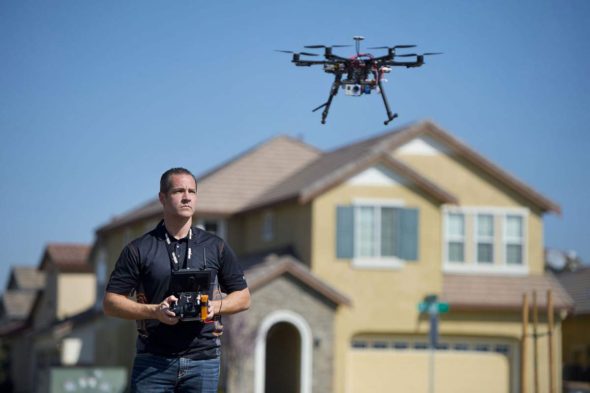Crackdown on drones goes local
Daily News Article — Posted on February 26, 2015

(by Kaja Whitehouse, USA Today) NEW YORK — The federal government isn’t the only entity seeking to rein in drones as their popularity grows.
Since 2012, 15 states have enacted laws restricting drones in some way, according to data from the National Conference of State Legislatures (NCSL), which tracks state laws. (see ncsl.org)
And if New York City Council Member Dan Garodnick (Democrat-Manhattan) gets his way, drones will be banned in the Big Apple, except for police with a warrant, as soon as this year.
Garodnick insists he’s not a technophobe. He said he agrees with people who argue that unmanned aircraft systems have enormous potential to help society, including monitoring structures as they are being built or helping to find missing people.
But Garodnick said he is worried about the ability of law enforcement to hold drone operators responsible for illegal or bad acts, especially in a crowded city like New York.
If a helicopter crashes into a group of people, the pilot will also likely be hurt. But if a drone crashes into people, the pilot may be nowhere to be found, Garodnick argued.
“There are a lot of very important uses for drones that exist, but until we have the ability to enforce the rules, we are not at a point to grant permission,” Garodnick told USA TODAY.
Across the country, state and local governments are grappling with a confusing array of questions about how to deal with drones, which hold great potential to help society as well as untested privacy and security risks.
Drone advocates say the rising plethora of restrictions threaten to leave the U.S. behind at a time when the drone industry is growing. Drone spending is on track to hit $91 billion worldwide in the next 10 years, according to aerospace and defense industry research group Teal Group.
“This is an incredibly important industry,” said John Frankel, founding partner of Venture Capital, which is an investor in drone operator Skycatch. “It will create an enormous number of jobs in the U.S. and abroad. It will open up enormous efficiencies for existing businesses and industries.”
If the U.S. gets too restrictive on drones, Frankel added, “Australia, Europe and Asia will become massive markets, and we will be a backwater.”
Currently, the biggest driver of new drone laws by states has been privacy, especially unlawful government surveillance. So far, 14 of the 15 states have passed laws to curb government agencies from using drones to monitor its citizens, such as in traffic or at a public rally.
Seven of the 15 states also sought to rein in how private citizens can use drones, according to NCSL’s data. In Louisiana, for, example, it’s illegal to use a drone to monitor a person or property without consent. Offenders face a fine of up to $500 and six months in jail.
Richard Williams of NCSL said he expects more states to propose legislation on drones this year. “It’s a new technology, and with expanded use the interest is going to continue,” Williams said of proposed drone rules.
The Federal Aviation Administration (FAA), meanwhile, has its own set of drone rules that limit drones around airports and for most commercial purposes, although it’s promised to ease restrictions on companies that want to use drones for business purposes.
Last week the FAA took its first step on that goal with a proposal outlining its plan for commercial drone use.

Christopher Brown, co-owner of Next New Homes Group, uses his multi-rotor helicopter drone to take aerial video…
But the FAA’s rules were still deemed too restrictive by some industry advocates. The proposed rules would require the drone operator to maintain visual contact with the drone at all times, thus hurting plans by companies such as Amazon.com from using drones to deliver packages.
Under the FAA’s rules, drones also cannot fly over people, which could limit their use in dense cities such as New York.
Reprinted here for educational purposes only. May not be reproduced on other websites without permission from USA Today. Visit the website at usatoday .com.
